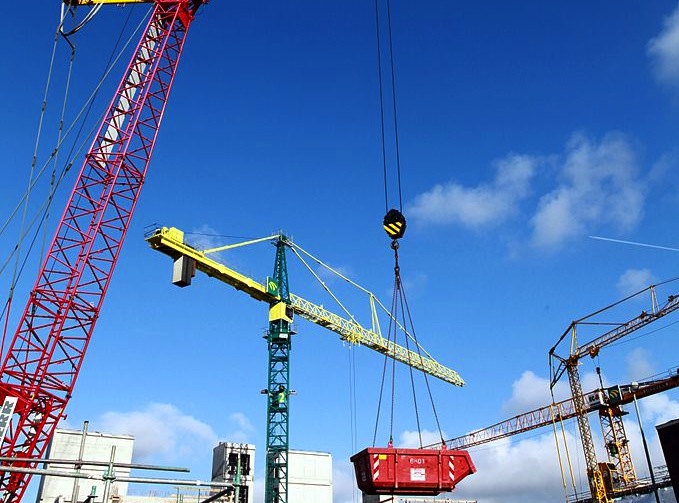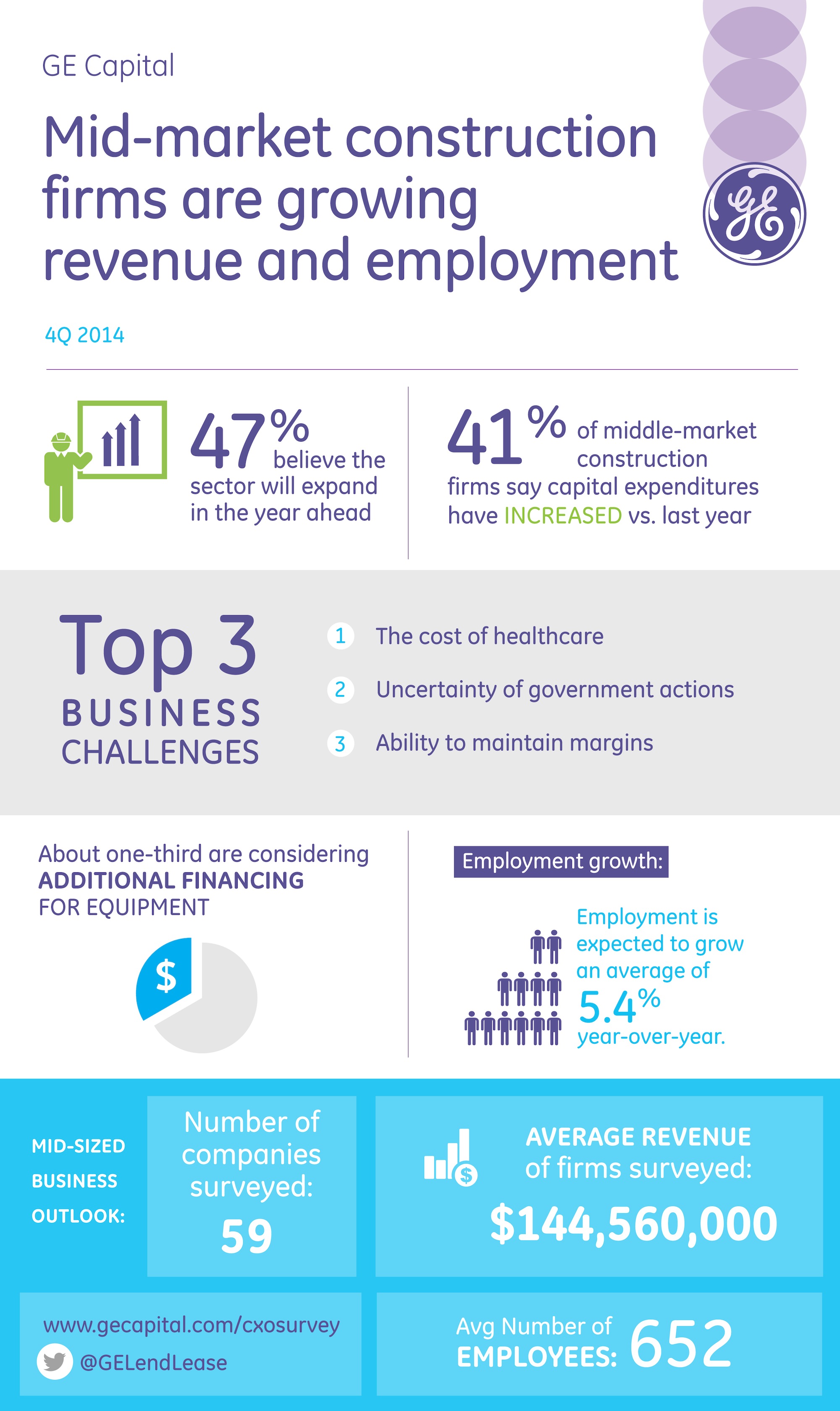Uncertainty about government spending clouds an otherwise positive economic outlook among 59 middle market construction firms polled recently by GE Capital.
Those firms—which average 652 employees and $144.6 million in annual revenue—are particularly confident about U.S. and local markets, though less so about the global arena. Only 12% of those polled said they were “extremely confident” about the condition of global economies, versus 21% who felt the same way about the U.S. economy, and 42% who liked what they were seeing about their local economies.
The firms’ confidence reflects their financial performance. Seven of 10 respondents reported improvements in their companies’ financials as of September 2014, versus fewer than three in five polled last March.
However, while half of the construction firms surveyed said they were hiring more people, the number was slightly down from the 57% who were hiring last March. The good news is that nearly half of the firms polled—47%—expect the construction industry to expand through September 2015, during which construction-related employment is expected to increase by 5.4%.
The survey’s respondents see the energy sector as holding out the greatest potential for future construction projects and hiring. Office and residential projects are also expected to be stronger. But a lot of these firms’ optimism seems contingent on public works spending, which “continues to have an immense impact on the industry and is a key consideration in expenditure decisions,” according to GE Capital.
Another factor that is likely to impact construction firms’ profitability is the direction that healthcare costs take. One-third of respondents are anticipating an increasing cost structure. Still, the respondents expect their margins to grow by average of 3.7% over the next year, which greatly exceeds the 0.2% growth that respondents were projecting last March.
GE Capital produces its quarterly surveys in cooperation with the National Center for the Middle Market, a multiyear partnership between GE Capital and Ohio State University’s Fisher College of Business. For more information about construction and other industries, visit gecapital.com/cxosurvey.
Related Stories
| Aug 11, 2010
Balfour Beatty agrees to acquire Parsons Brinckerhoff for $626 million
Balfour Beatty, the international engineering, construction, investment and services group, has agreed to acquire Parsons Brinckerhoff for $626 million. Balfour Beatty executives believe the merger will be a major step forward in accomplishing a number of Balfour Beatty’s objectives, including establishing a global professional services business of scale, creating a leading position in U.S. civil infrastructure, particularly in the transportation sector, and enhancing its global reach.
| Aug 11, 2010
Construction unemployment rises to 17.1% as another 64,000 construction workers are laid off in September
The national unemployment rate for the construction industry rose to 17.1 percent as another 64,000 construction workers lost their jobs in September, according to an analysis of new employment data released today. With 80 percent of layoffs occurring in nonresidential construction, Ken Simonson, chief economist for the Associated General Contractors of America, said the decline in nonresidential construction has eclipsed housing’s problems.
| Aug 11, 2010
Billings at U.S. architecture firms exceeds $40 billion annually
In the three-year period leading up to the current recession, gross billings at U.S. architecture firms increased nearly $16 billion from 2005 and totaled $44.3 billion in 2008. This equates to 54 percent growth over the three-year period with annual growth of about 16 percent. These findings are from the American Institute of Architects (AIA) Business of Architecture: AIA Survey Report on Firm Characteristics.
| Aug 11, 2010
CHPS debuts high-performance building products database
The Collaborative for High Performance Schools (CHPS) made a new tool available to product manufacturers to help customers identify building products that contribute to sustainable, healthy, built environments. The tool is an online, searchable database where manufacturers can list products that have met certain environmental or health standards ranging from recycled content to materials that contribute to improved indoor air quality.
| Aug 11, 2010
ICC launches green construction code initiative for commercial buildings
The International Code Council has launched its International Green Construction Code (IGCC) initiative, which will aim to reduce energy usage and the carbon footprint of commercial buildings.Entitled “IGCC: Safe and Sustainable By the Book,” the initiative is committed to develop a model code focused on new and existing commercial buildings. It will focus on building design and performance.
| Aug 11, 2010
Green Building Initiative launches two certification programs for green building professionals
The Green Building Initiative® (GBI), one of the nation’s leading green building organizations and exclusive provider of the Green Globes green building certification in the United States, today announced the availability of two new personnel certification programs for green building practitioners: Green Globes Professional (GGP) and Green Globes Assessor (GGA).
| Aug 11, 2010
Potomac Valley Brick launches brick design competition with $10,000 grand prize
Potomac Valley Brick presents Brick-stainable: Re-Thinking Brick a design competition seeking integrative solutions for a building using clay masonry units (brick) as a primary material.








